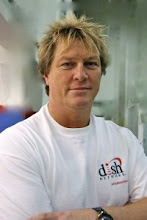Ashes campaign will hinge on survival of the fittest fast bowlers
- The Times
- December 18, 2012
With 10 Ashes Tests alone scheduled in back-to-back series between July 10 and January 7, 2014, the fast bowlers especially are facing gruelling demands on their bodies.
The onus will be on both sides to try to keep their pace attacks fit. There are ominous signs in the early departure from India of Stuart Broad with yet another injury, this time to his left heel, and Steven Finn because of a strain in his lower back, a problem that tends to set alarm bells ringing.
Ian Pont, who has worked extensively as a bowling coach and is the author of The Fast Bowler's Bible, believes that the strains imposed on ankles, knees and backs in particular mean that England will need six pace bowlers over the course of the Australian matches.
"We have the talent in England," Pont said. "It is a question of whether we can keep our best bowlers on the field.
"We are still to find the right balance between the technical and the strength and conditioning sides of bowling. England and Australia are more advanced than other countries, but we do still seem to get injuries."
Broad's trouble can be traced to a knee problem in September 2009. Before the end of that year, he firstly tore a buttock muscle, then jarred a shoulder in South Africa. A back spasm punctuated his tour of Bangladesh the following March. Although England took him out of cricket in the summer of 2010 to build up core strength, the unhappy run was about to get worse.
A torn stomach muscle forced him to miss the last three Tests of the 2010-11 Ashes plus the subsequent one-day series, and a side strain meant he also left the 2011 World Cup early. When he tore his shoulder muscle towards the end of the season it meant a third serious injury in less than a year.
The worrying trend of leaving tours early has continued this year. A calf injury cut short his series in Sri Lanka in March, with Andy Flower, the team director, admitting concern at a recurring issue. Now Broad is home again, the curtailed, wicketless India trip a nadir in his career when, at 26, he ought to be approaching his peak.
"He has one of the better actions, technically," Pont said. "If you have an area of weakness in the body I guess it follows logically that you become more susceptible there. Also, if a bowler has a problem, he might compensate and that causes a problem in another area. I do not know if that is the case with Broad, but his pace has dropped and he is nothing like as potent as he was."
Finn, 23, does not have the same catalogue of setbacks. England has been careful to introduce him gradually through one-day internationals into what will, fitness permitting, be regular Test action. He missed the first two Tests in India because of a thigh injury from fielding, but had already suffered back soreness in September before the latest trouble.
Pont has identified a technical issue with Finn's action.
"He falls a bit to the off-side and his arm comes down slightly from behind the umpire rather than straight," he said. "It may not be causing the injury, but people can slightly misalign an action and when that is repeated hundreds of times it can cause a weakness in the body."
Problems are far from unique to England. Australia has suffered even worse of late. It went into the final Test against South Africa recently without its entire first-choice attack of Peter Siddle, Ben Hilfenhaus, and James Pattinson. Ryan Harris and Pat Cummins were also unavailable. On Sunday, Hilfenhaus pulled up against Sri Lanka in Hobart with a side strain.
Studies from the National Performance Centre in Loughborough have shown that stress fractures affect up to 50 per cent of young fast bowlers, so everything begins from ensuring that bowlers can stand up to the rigours of such an unnatural job.
The importance of strength and conditioning work has filtered to the counties with ECB grants for specialist coaches.
England rests and rotates bowlers, but that has not prevented Broad or Finn from being injured.
"Since 2005 the strength and conditioning work has improved," Pont said. "The challenge is to bowl enough overs to make sure they are fit for purpose. It is difficult because they do not bowl a lot of overs in the nets, but then might bowl 25 in an innings and field for three days."
Jock Campbell, an expert in strength and conditioning and former physical performance manager to the Australia team, recently quoted from a study in Australia that showed to reduce risk of injury, bowlers should regularly send down no more than 30 overs per week. But guidelines go out of the window when a Test match is there to be won.
The Ashes matches will not just be won by pace, hostility and skill. Results will also come down to an old-fashioned Darwinian survival of the fittest.
THE TIMES
